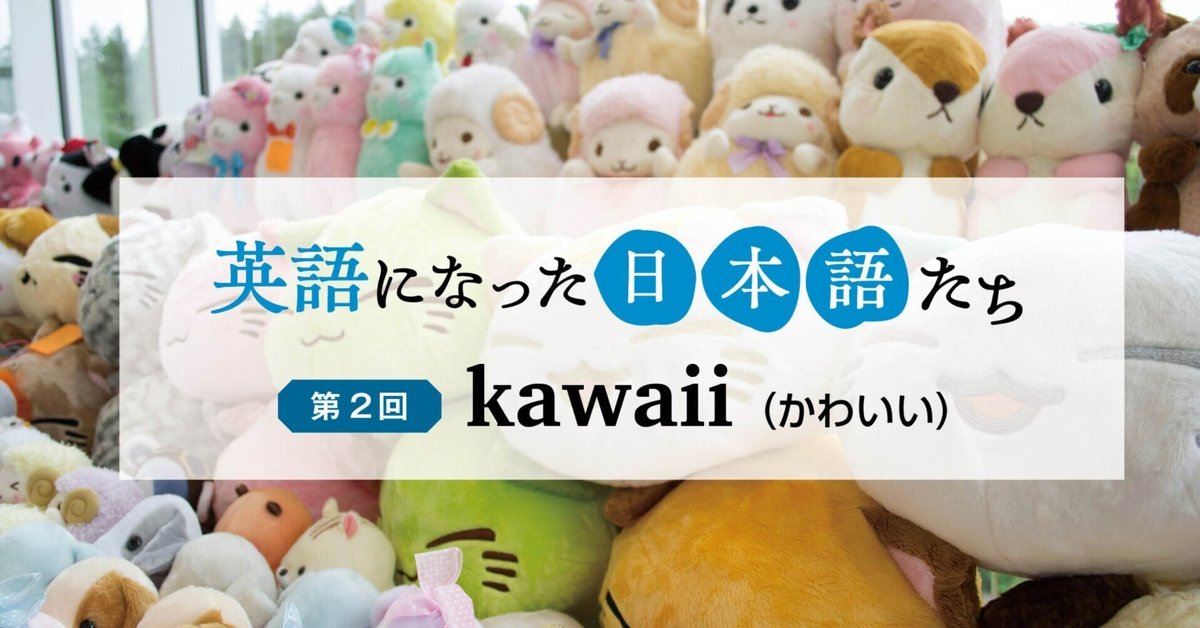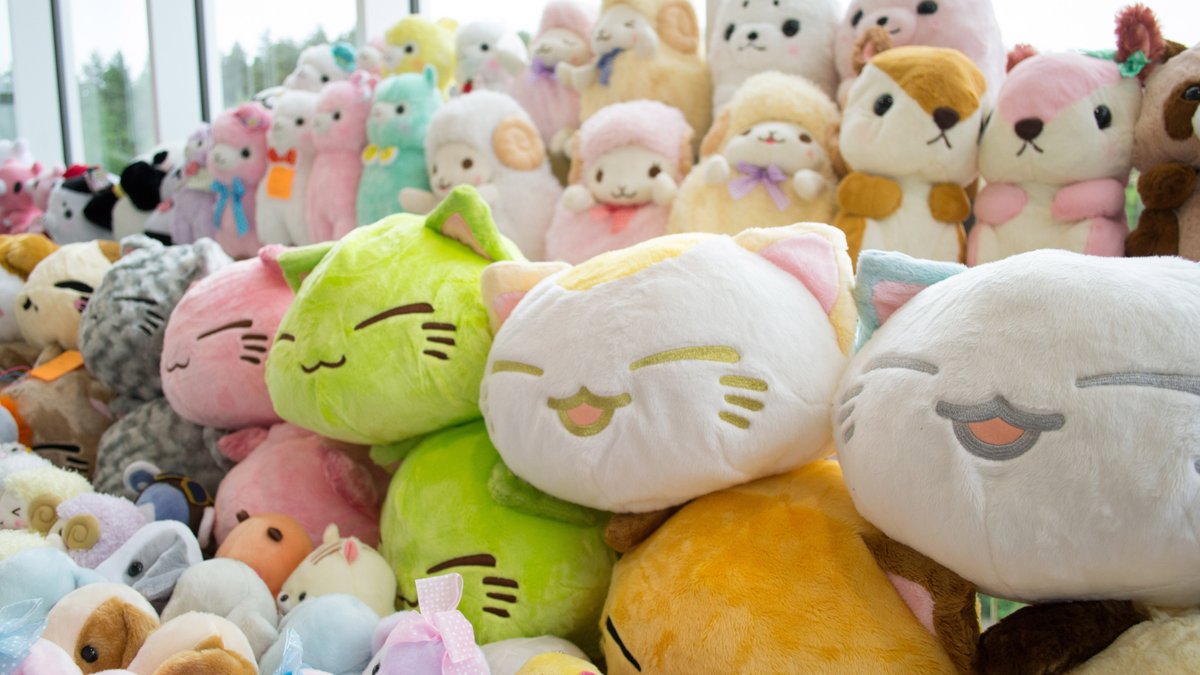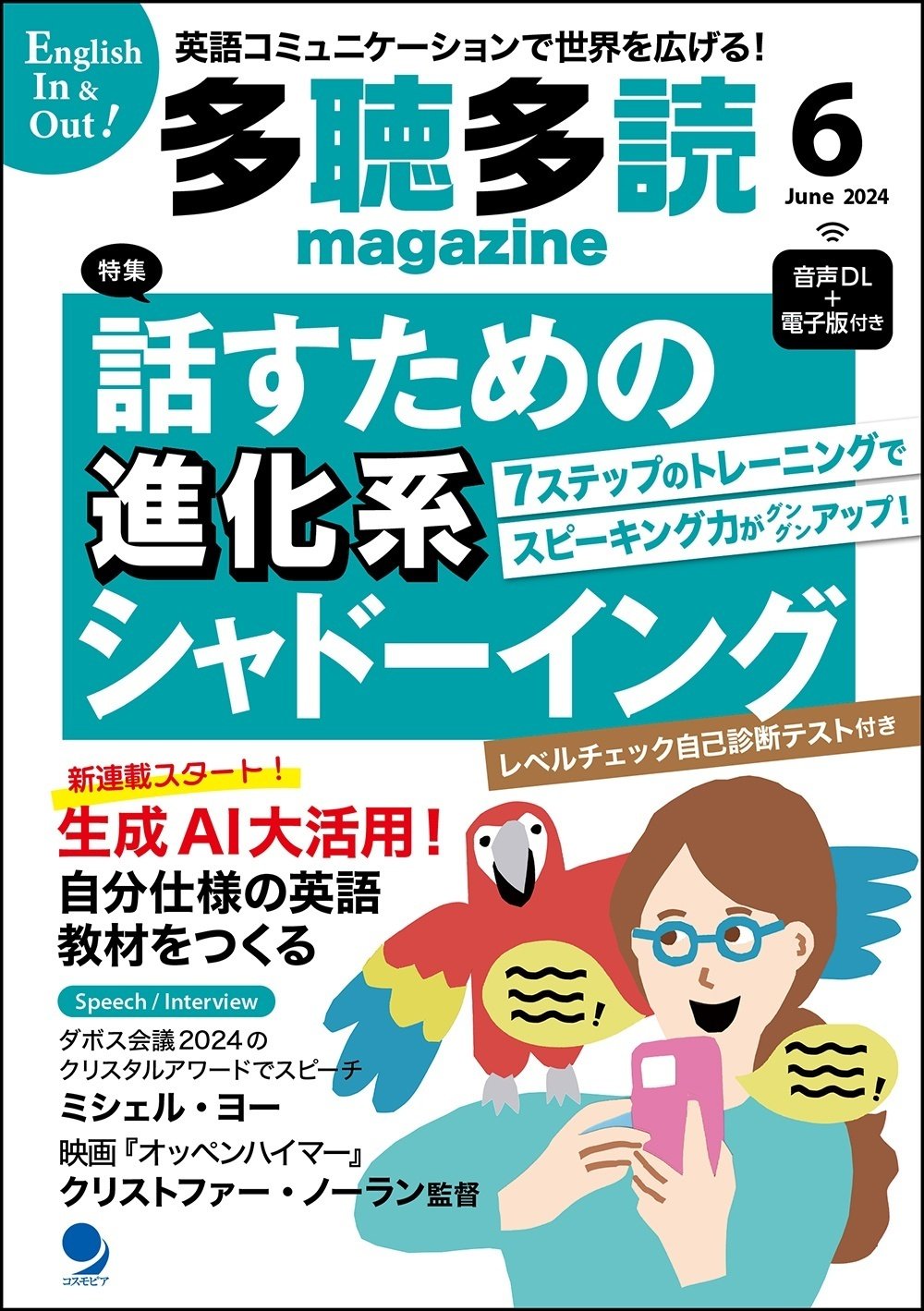
英語になった日本語たち [第2回] kawaii
このnote記事は、『多聴多読マガジン2024年6月号』からのスピンアウトです。
この連載では、海外で通じるようになった日本語のことばを英語で紹介します。古くはsushiやsukiyaki、最近はpokemon、emoji、mottainaiなどなど、その日本語が海外で受容されるようになった背景をひも解いていけば、日本文化の独自性が見えてくるかも……?
第2回 kawaii (かわいい)
kawaii(かわいい)は、「21世紀に入って最も世界に広まった日本語」とも言われています。日本を代表する数々のポップカルチャーが海外で人気となったことがきっかけで、kawaiiという言葉が広まっていきました。このことばをとりまく状況を見ていきましょう。

“Kawaii” is said to be the most global Japanese word of the 21st century. How did the term become so popular?
kawaiiは、21世紀において最も世界に広まった日本語と言われています。どのようにしてこのことばがこれほどまでに人気になったのでしょうか?
kawaiiという日本語を牽引した文化は
どのようなものだったのでしょうか?
The popularity of the word “kawaii” is related to the international spread of Japanese pop culture.
kawaiiということばの人気は、日本のポップカルチャーの国際的な広がりと関係しています。
With the rise of the internet, Japanese pop culture such as anime, manga, and videogames became widely known worldwide. Unique Japanese fashion styles such as “lolita” and the costumes of idol singers also became well-known.
インターネットの台頭により、アニメ、マンガ、ビデオゲームといった日本のポップカルチャーは世界に広く知られるようになりました。「ロリータ」ファッションやアイドル歌手の衣装など、日本独自のファッションスタイルもまたよく知られるようになりました。
Since then, international fans have been engaging with Japanese culture more and more, adopting the fashion styles and even traveling to visit Harajuku, which is a homebase for Kawaii Culture.
その頃から、海外のファンはますます日本文化に関わるようになり、ファッションスタイルを自分のものとして取り入れ、カワイイ文化の本拠地である原宿に足を運ぶことさえするようになりました。
kawaiiはどんな感情を引き起こしますか?
As a result, the term “kawaii” (or “Kawaii Culture”) is now used all around the world to describe vibrant and unique forms of Japanese culture. It is perhaps the only term that can accurately represent phenomena like lolita fashion, Hello Kitty, and Kyary Pamyu Pamyu in a single word. It also embodies the positive feelings evoked by these cultural forms.
その結果、kawaii(すなわち「kawaiiカルチャー」)という用語は、生き生きとしたユニークな日本文化を表すことばとして世界中で使われるようになっています。ロリータファッション、ハローキティ、きゃりーぱみゅぱみゅといった社会現象を一言で的確に表現できるのは、おそらくこのことばだけでしょう。また、kawaiiは、この文化形態から呼び起こされるポジティブな感情をも体現しています。
kawaiiとcute、両者の違いは?
“Kawaii” means “cute” in English. As you may know, “cute” is used to describe things like puppies, kittens, and babies. On the other hand, “kawaii” carries a broader meaning. For example, the word can even be used to express admiration for the stylish fashion of a middle-aged man or the look of a robot.
kawaiiとは英語で「cute」という意味です。 ご存知のように、cuteは子犬や子猫、赤ちゃんのようなものを表現するのに使われます。一方、kawaiiにはもっと広い意味があります。例えば、中年男性のはやりのファッションやロボットの見た目をほめるときにも使えるのです。
The term “kawaii” is expected to continue evolving due to its broad usage and the positive emotions it evokes.
kawaiiということばは、その幅広い使われ方とポジティブな感情を呼び起こすことから、今後も進化し続けていくでしょう。
『多聴多読マガジン6月号』5/7(火)発売!

特集は「話すための"進化系"シャドーイング」。
シャドーイングはリスニング力向上に大きな効果がある分、負荷の高いトレーニング。手順や素材選びに注意して学習を進めることが大切です。従来のシャドーイングのステップに、細かなニュアンスまでそっくり再現する「なりきり音読」と、自分なりに要約してポイントを話す「リテリング」を加えることで、スピーキング力アップへ直結させるルートを特集しました。
インタビューは映画『オッペンハイマー』のクリストファー・ノーラン監督。
